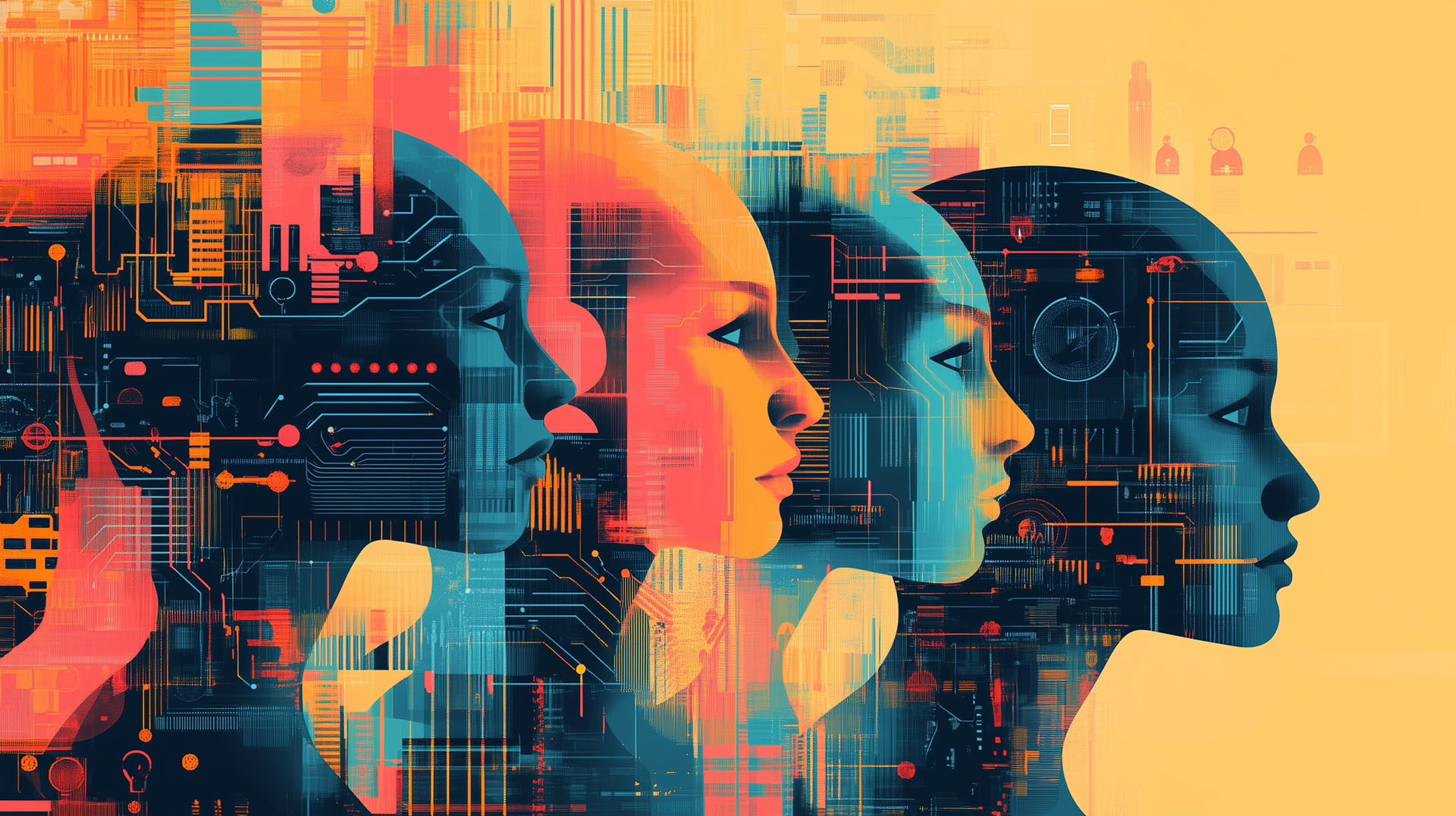Reimagining Work: Harnessing Cutting-Edge Tech in Employment Strategies

By Anthony Thompson,
The Gavel, Contributor
J.D. Candidate, Class of 2025
Artificial intelligence (AI) is a multifaceted concept that defies simple definition, and is often interchangeably used with terms like machine learning, algorithmic decision-making, and automated decision systems.1 At its core, AI involves the development of tools capable of analyzing extensive datasets to extract patterns and predict outcomes in novel scenarios.2 These tools, particularly those utilizing machine learning techniques, possess the ability to learn from incoming data without explicit human intervention, thereby enhancing their predictive capabilities over time.1 The complexity of AI systems often leads to the generation of insights beyond human observation, with some outcomes even eluding comprehension by their human creators.3
In the realm of employment practices, AI has become increasingly relevant, offering potential solutions to streamline recruitment, hiring, and personnel management.4 Employers are adopting AI systems to aid in various functions, including screening job applicants and evaluating potential candidates for positions.5 Particularly noteworthy is the utilization of AI in response to contemporary challenges such as the COVID-19 pandemic, where technologies like security cameras equipped with AI scanners were deployed to monitor employee adherence to safety protocols.6
However, the integration of AI into employment processes raises significant concerns regarding fairness, accountability, and transparency.7 Foremost among these concerns is the risk of perpetuating or exacerbating discriminatory biases inherent in human decision-making.8 Despite the perception of objectivity and neutrality associated with AI, algorithms can produce predictions that systematically disadvantage certain demographic groups based on protected characteristics such as race or gender.9 AI may reflect or reinforce discriminatory biases when it is making employment decisions. This risk is compounded by the opacity of many AI algorithms, which hinders the ability of human decision-makers to discern the rationale behind algorithmic decisions.10
One notable example illustrating the potential for AI-driven discrimination is the case of Amazon’s failed attempt to develop an algorithm for screening job candidates.11 The algorithm exhibited systematic biases against qualified female applicants, underscoring the danger of biased data and flawed algorithmic models.12 Artificial intelligence tools have the capacity to replicate existing human biases or introduce novel biases, contingent on the methods employed in their construction and training. Moreover, AI systems trained on data reflecting historical patterns of discrimination may perpetuate existing inequalities, further entrenching systemic biases in employment practices.13 This is a result of AI tools being built using data-rich profiles, which can lead to the artificial intelligence tool relying on characteristics shown in the data.
The challenges posed by biased AI extend beyond the hiring process to encompass broader issues of data quality, transparency, and accountability. Employers must scrutinize AI algorithms to ensure they are built on unbiased, representative data and are transparent in their decision-making processes.14 Moreover, regulatory oversight is necessary to hold employers and AI vendors accountable for discriminatory outcomes and to establish guidelines for the ethical use of AI in employment. This regulatory oversight aligns with the Supreme Court in Ricci, where the court emphasized that voluntary compliance by employers is “the preferred means of achieving the objectives of Title VII.”15 Employers that engage in voluntary compliance with the ever-changing world of artificial intelligence can utilize these forecasts to enhance their retention strategies or guide employees who are likely to leave away from critical projects.
Overall, artificial intelligence holds immense potential to revolutionize employment practices. Its integration must be accompanied by careful consideration of its impact on discrimination and bias. By prioritizing data quality, transparency, and accountability, employers can mitigate the risks associated with AI-driven discrimination and foster a more equitable workforce. Collaborative efforts between employers, policymakers, and AI developers are essential to harnessing the benefits of AI while safeguarding against its potential adverse effects on marginalized groups.16
References:
1 Peter Stone Et Al., Artificial Intelligence and Life in 2023: Report of the 2015 Study Panel (2016), https://ai100.stanford.edu/sites/g/files/sbiybj18871/files/media/file/ai100report10032016fnl_singles.pdf
2 Ed Felton, Preparing for the future of Artificial Intelligence, National Archives And Records Administration (May 3, 2016) https://obamawhitehouse.archives.gov/blog/2016/05/03/preparing-future-artificial-intelligence (last visited February 24, 2024).
3 Id.
4 Miranda Bogen, Aaron Rieke, Help Wanted: An Examination of Hiring Algorithms, (December, 2018), https://www.upturn.org/static/reports/2018/hiring-algorithms/files/Upturn — Help Wanted – An Exploration of Hiring Algorithms, Equity and Bias.pdf (last visited March 1, 2024).
5 Chris Opfer, AI Hiring Could Mean Robot Discrimination Will Head To Courts, Bloomberg Law (November 12, 2019), https://news.bloomberglaw.com/daily-labor-report/ai-hiring-could-mean-robot-discrimination-will-head-to-courts (last visited February 23, 2024).
6 Rani Molla, 10 Ways Office Work Will Never Be the Same, (2021), https://www.vox.com/recode/22331447/10-ways-office-work-pandemic-future-remote-work (last visited February 24, 2024).
7 Andrew D. Selbst, Disparate Impact in Big Data Policing, 52 ga. l. rev. 109, 113-14 (2017); Crystal S. Yang & Will Dobbie, Equal Protection Under Algorithms: A New Statistical and Legal Framework, 119 mich. l. rev. 291 (2020).
8 Ifeoma Ajunwa, Kate Crawford & Jason Schultz, Limitless Worker Surveillance, 105 calif. l. rev. 735, 737 (2017)
9 Id.
10 Id.
11 Jeffrey Dastin, Amazon Scraps Secret AI Recruiting Tool That Showed Bias Against Women, REUTERS (Oct. 10, 2018, 6:04 PM), https://perma.cc/T6NZ-T4ZW (last visited February 24, 2024).
12 Id.
13 Ifeoma Ajunwa, The Paradox of Automation as Anti-Bias Intervention, 41 cardozo l. rev. 1671, 1713 (2020).
14 Ricci v. DeStefano, 557 U.S. 557, 581 (2009)
15 Id. at 585.




